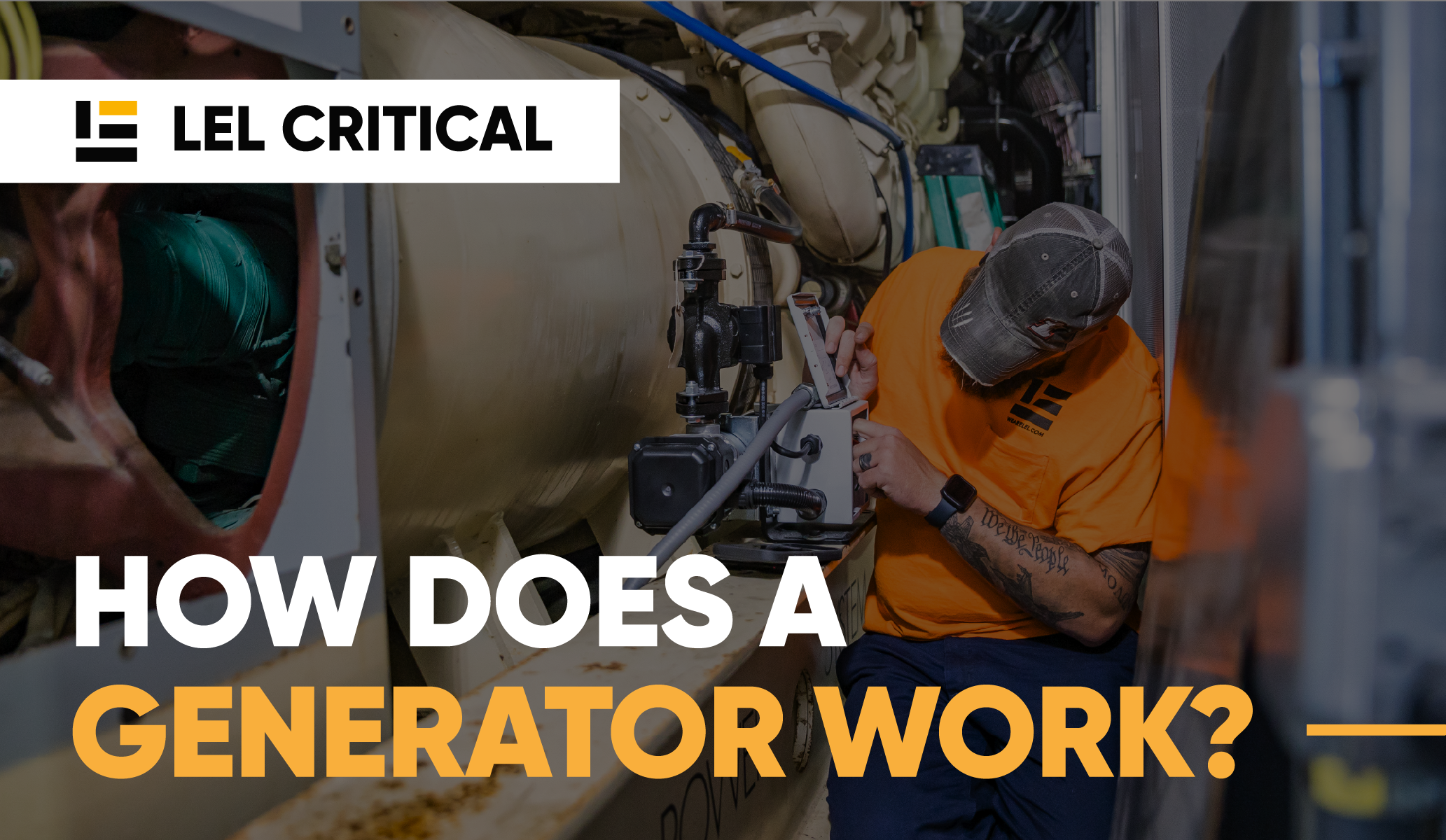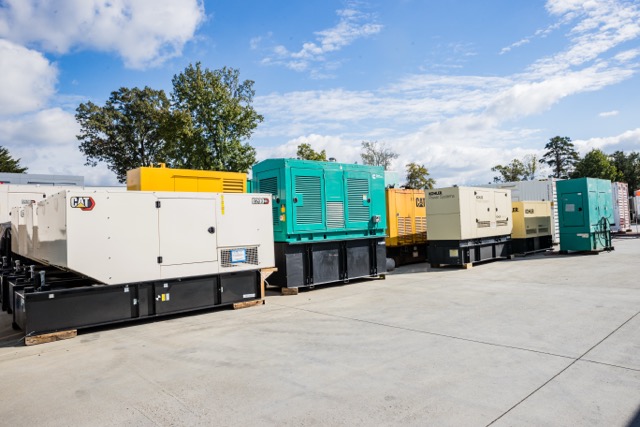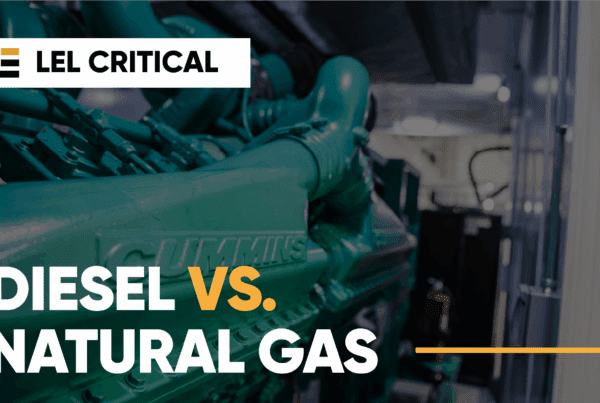
How Does a Generator Work? A Complete Industrial Guide
When utility power fails, knowing how does a generator work becomes the backbone of any operation. Whether you’re buying, managing, or reselling power equipment, understanding how does a generator works gives you the insight to make better decisions. This article explains how generators produce electricity, the key components involved, the various types available, and what you need to know to ensure long-term reliability and optimal performance.
What Is a Generator?
A generator is a device that converts mechanical energy into electrical energy. It doesn’t create electricity out of nothing; it forces the movement of electric charges through a conductor, using the principle of electromagnetic induction. This process was first discovered in the early 1830s and still powers most generators today.
In simple terms, a generator uses a mechanical engine to spin a magnet inside coils of wire. The magnetic field causes electrons to flow through the wire, producing an electric current. That electricity is then routed through a control panel and distributed to your systems or facility.
For a visual breakdown of this process, The Engineering Mindset has a helpful animation explaining electromagnetic induction in generators.
How Does a Generator Produce Electricity?
The power generation process typically follows these steps:
- The engine starts up, using a battery and starter motor.
- Mechanical energy is transferred to the rotor, which spins inside the stator to induce current.
- The voltage regulator senses output voltage and adjusts the excitation system to maintain a steady level of electrical output.
- Power is conditioned and routed through the control panel, where it’s monitored, adjusted, and sent to the load.
This process is consistent across most industrial generators, whether used for standby, prime, or continuous power applications.
Main Components of an Industrial Generator
A generator is made up of several key systems that work together to produce and deliver electricity. Each part plays a specific role in ensuring consistent performance and reliability.

Image source: testbook.com
| Component | Function |
| Engine | Converts fuel into mechanical energy to power the alternator. |
| Alternator | Uses mechanical energy to generate alternating current through electromagnetic induction. |
| Fuel System | Stores and delivers fuel to the engine at the correct flow and pressure. |
| Voltage Regulator | Maintains consistent output voltage by controlling excitation to the alternator. |
| Cooling System | Prevents overheating by removing excess heat from the engine and alternator. |
| Exhaust System | Directs combustion gases safely away from the generator. |
| Lubrication System | Reduces friction and wear on engine components by circulating oil. |
| Battery and Charger | Powers the starter motor and maintains the battery charge when the unit is idle. |
| Control Panel | Monitors and manages operation with gauges, alarms, and protective shutdowns. |
| Frame and Enclosure | Provides structural support, containment, and environmental protection. |
These core components are standard across most industrial generator models, regardless of fuel type or size. Understanding each one helps you evaluate system condition, plan maintenance, and make informed purchasing decisions.
Common Generator Types
Generators are categorized based on fuel type and application. Each type serves different needs depending on reliability, emissions, and operating conditions.
Diesel Generators
The most common choice for standby and prime applications. Diesel offers high energy density and strong performance under load.
Natural Gas Generators
A cleaner-burning option that connects to the utility gas supply. Ideal for locations where long runtime is needed, or diesel fuel delivery is limited.
>> Wondering which type of generator is right for your operation? Check out our blog post: Diesel vs. Natural Gas Generators
Bi-Fuel Generators
Combine diesel and natural gas. They typically start on diesel and switch to a blend, offering longer runtime during outages.
Propane (LPG) Generators
Used for rural or small commercial settings where propane tanks are readily available. Cleaner-burning, but often higher in cost per kWh.
Portable and Inverter Generators
Smaller units for temporary or remote job sites. Inverter generators offer clean, stable power for electronics and tools.
Prime or Continuous Power Generators
Built for non-stop operation, such as in mining or remote areas without grid access. These units are rated to run thousands of hours annually.
Maintenance Guidelines
To keep your generator in peak condition, routine maintenance is essential. Here’s a typical schedule based on NFPA 110:
- Weekly: Visual inspection, fluid leaks, battery voltage
- Monthly: Load testing for 30 minutes at 30% rated load
- Semi-Annually: Oil sampling, belt and hose checks, infrared scan
- Annually: Full-load bank testing, fuel polishing (for diesel units)
Consistent maintenance prevents wet stacking, catches component wear early, and ensures your system performs when it matters most.
Key Takeaways
Understanding how does a generator work and how its key components function together gives you a stronger foundation for managing power systems effectively. Whether you’re purchasing a unit, planning maintenance, or evaluating equipment for resale, this knowledge helps you avoid costly mistakes and make confident decisions. As power demands grow and reliability becomes more critical, having a clear grasp of generator fundamentals is more valuable than ever. Now hopefully you have a better idea of how does a generator work.
Need Expert Help?
At LEL Critical, we combine deep industry experience with a client-first approach to deliver dependable power solutions. Whether you need a reliable used generator, custom enclosure, or help managing surplus equipment, our team is here to make the process efficient and hassle-free.
Explore our inventory or contact us to talk with a power equipment expert today.

References
- The Engineering Mindset – How a Generator Works (YouTube)
- Testbook – Parts of a Generator
- NFPA – NFPA 110 Standard for Emergency and Standby Power Systems
- Cummins Power Generation – Generator Sets
- Generator Source – How Does a Generator Create Electricity
Author
This article (how does a generator work) was written by Amanda Horner and Alec Graham.






